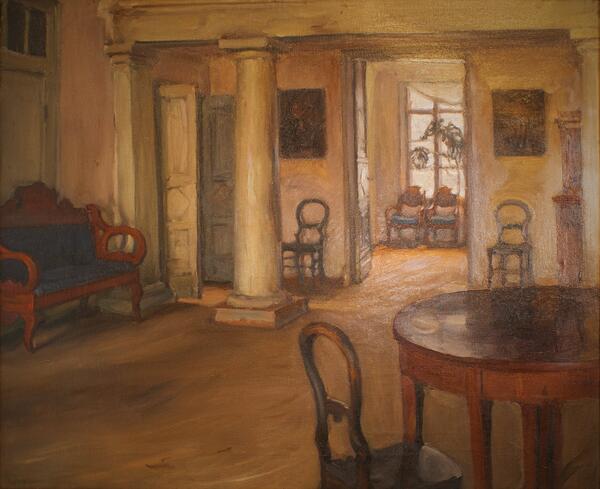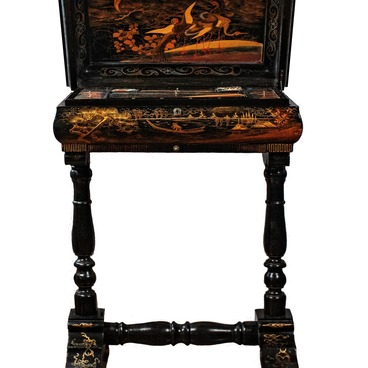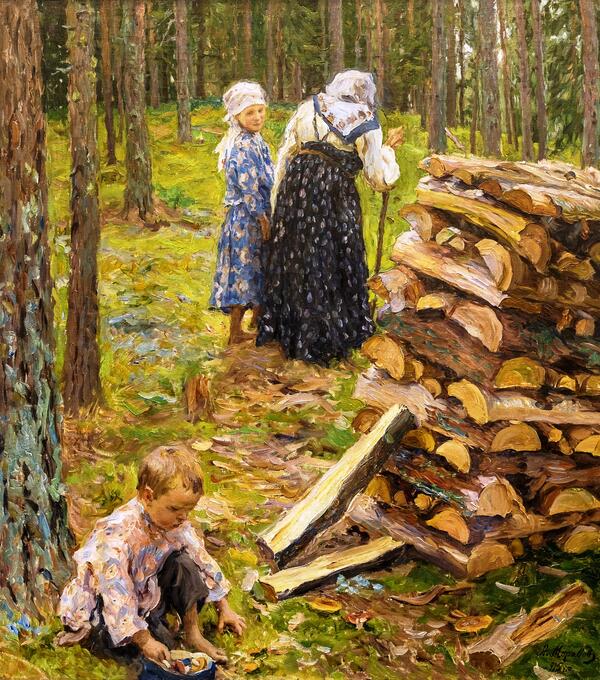Alexander Moravov was born in 1878 in the village of Velikaya Motovilovka, Kyiv province, in a family of a doctor. Association with his father’s close friends — famous Russian painters Mikhail Vrubel and Nikolay Ge — influenced his career choice. In 1897, the young man entered the Moscow School of Painting, Sculpture and Architecture, where he studied under famous artists — Abram Arkhipov, Nikolay Kasatkin, and Alexey Korin.
Moravov became a famous artist during the pre-revolutionary years. His historical paintings and studies of peasant life were often exhibited at the Itinerant exhibitions, local and international vernissages. Moravov’s canvases were often acquired by museums. The artist was still recognized after the revolution, which, however, did not influence his painting to the point of becoming acutely social. The artist devoted more than thirty years of his life to creating his best paintings in the picturesque nature of the Tver region. Several of his works were painted in the Ostrovno estate, near Vyshny Volochyok. The “Old Hall” is one of them.
Moravov depicted a hall of a manor house. The once rich and bright house seems to be going through hard times: minimalistic interiors, frayed walls and furniture, and a lonely-looking window without curtains. The estate belonged to the Ushakov landowners: Catherine, her son Nicholas and daughters Varvara and Sophia. The estate was located on the shores of Lake Ostrovno, which got its name because of three islands (“ostrov” in Russian) within it. According to a resident Agafya Semyonova, born in 1903, the estate was a huge wooden house on a hill. She especially remembered a two-story hall with balconies, from which serf singers and an orchestra performed at balls and dinners. The house was so big that once, while still a girl, she got lost there among the halls and enfilade of rooms.
The calmness and silence of provincial life, captured on the canvas, hide the stormy events that once took place in the house. The artist Isaac Levitan had a dramatic love story unravel here in the spring of 1893, which led him to try to shoot himself. Anton Chekhov, who came to Ostrovno at the urgent request of his friend Levitan, described the hall in his story “The House with the Mezzanine”:
Moravov became a famous artist during the pre-revolutionary years. His historical paintings and studies of peasant life were often exhibited at the Itinerant exhibitions, local and international vernissages. Moravov’s canvases were often acquired by museums. The artist was still recognized after the revolution, which, however, did not influence his painting to the point of becoming acutely social. The artist devoted more than thirty years of his life to creating his best paintings in the picturesque nature of the Tver region. Several of his works were painted in the Ostrovno estate, near Vyshny Volochyok. The “Old Hall” is one of them.
Moravov depicted a hall of a manor house. The once rich and bright house seems to be going through hard times: minimalistic interiors, frayed walls and furniture, and a lonely-looking window without curtains. The estate belonged to the Ushakov landowners: Catherine, her son Nicholas and daughters Varvara and Sophia. The estate was located on the shores of Lake Ostrovno, which got its name because of three islands (“ostrov” in Russian) within it. According to a resident Agafya Semyonova, born in 1903, the estate was a huge wooden house on a hill. She especially remembered a two-story hall with balconies, from which serf singers and an orchestra performed at balls and dinners. The house was so big that once, while still a girl, she got lost there among the halls and enfilade of rooms.
The calmness and silence of provincial life, captured on the canvas, hide the stormy events that once took place in the house. The artist Isaac Levitan had a dramatic love story unravel here in the spring of 1893, which led him to try to shoot himself. Anton Chekhov, who came to Ostrovno at the urgent request of his friend Levitan, described the hall in his story “The House with the Mezzanine”:






